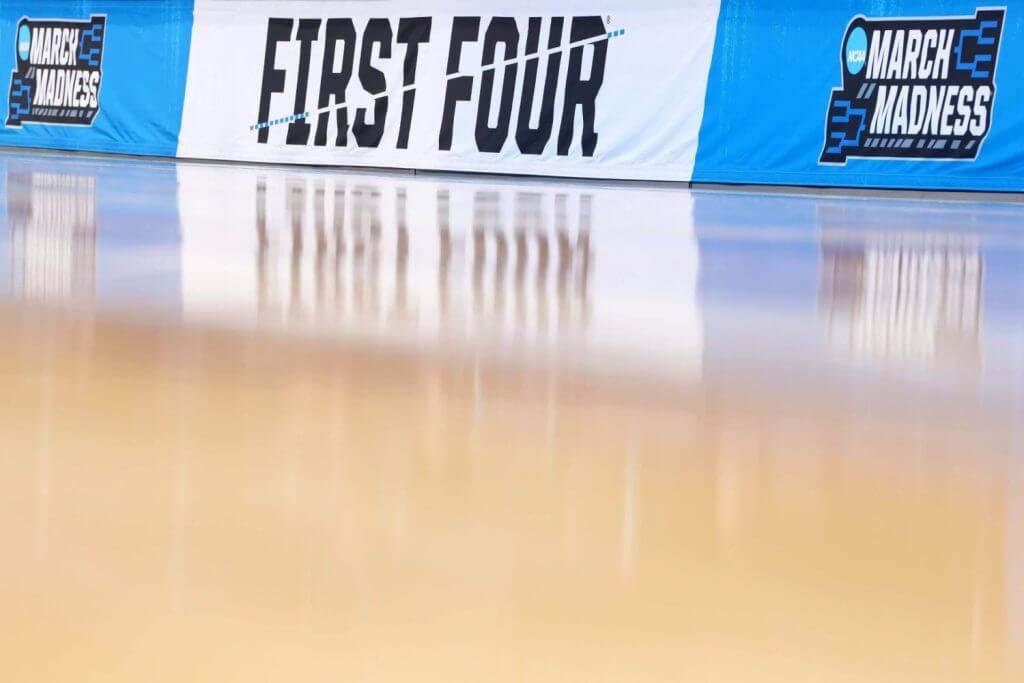NCAA president Charlie Baker sees plenty of deserving teams being left out of March Madness, and that’s why he is pushing for expansion beyond the current field of 68.
Speaking Monday at an event billed as “The Future of College Basketball” held at the Empire State Building and sponsored by the Big East, Baker declined to give odds on whether the NCAA basketball tournaments would expand by the 2026-27 season. The current format is locked in for the upcoming college basketball season, and ultimately it is the NCAA’s college basketball committee that will decide on whether, how and by how much (likely to 72 or 76 teams) to expand the field.
Advertisement
But Baker wasn’t shy about where he stood on the issue.
“One of the reasons I’m interested in expanding the tournament, although it comes with a lot of logistical complications and everything else, is, I do think there are teams that didn’t make the tournament that should have,” Baker said. “And it bummed me out that they didn’t get in.”
Baker cited two controversial exclusions from the 2023-24 season: St. John’s in Rick Pitino’s first season as coach at the Big East school and Indiana State, which finished 28-6 but lost in the Missouri Valley tournament.
“I’ve seen a bunch of stories about how there aren’t any worthy schools that are left out,” Baker said. “I don’t believe that.”
Advertisement
March Madness expansion has been a discussion point within the NCAA for several years. NCAA vice president of men’s basketball Dan Gavitt has been working with television partners CBS and Warner Bros. Discovery on the idea of adding more teams and games to the iconic event.
The NCAA’s deal with CBS and WBD pays the association about a billion dollars per year and runs through 2032. Most of that money is distributed back to NCAA member schools, including units that reward performance in the tournament and are paid out to conferences.
The networks are under no obligation to pay more for additional games, so the NCAA is exploring new revenue streams — possibly related to expanded sponsorship categories — to help fund expansion expenses such as more venues and travel for more teams.
Craig Robinson, the former Oregon State head coach and executive director of the National Association of Basketball Coaches, said opinions on expansion are all over the map among his members.
Advertisement
“There is no consensus,” he said.
There also is no strong opposition to the idea of growing the field. How to expand and how to adjust revenue distribution going forward has the potential to spark debates among NCAA membership and fans.
Currently, each of 32 Division I conferences is guaranteed at least one bid to the field. The other 36 teams are chosen by the selection committee with no regard to conference affiliation. Leaders of the Power 4 conferences (the ACC, Big Ten, Big 12 and SEC) have pushed for tournament expansion because they are likely to be the biggest beneficiaries of the extra at-large bids. The smaller conferences are most concerned with protecting their access to the tournament and the revenue that comes with it.
“And I also want to do something that preserves and protects the automatic qualifiers,” Baker said. “Now, when you’re giving 32 automatic qualifiers every year in a field of 68 almost by definition, it means you’re gonna leave a bunch of teams out of the tournament who are probably one of the 64 best. Raise the size of the tournament a little bit, pretty much guaranteeing that that really won’t be an issue going forward.”
Advertisement
One expansion plan would create a 24-team opening round, expanding on the idea of the current First Four played Tuesday and Wednesday and putting more teams into a play-in tournament to the main 64-team bracket.
“I would argue just the opposite. The opening round is now the first round. They don’t have a play-in anymore. We now have an opening round,” Baker said.
This article originally appeared in The Athletic.
Men’s College Basketball, Sports Business, Women’s College Basketball
2025 The Athletic Media Company
